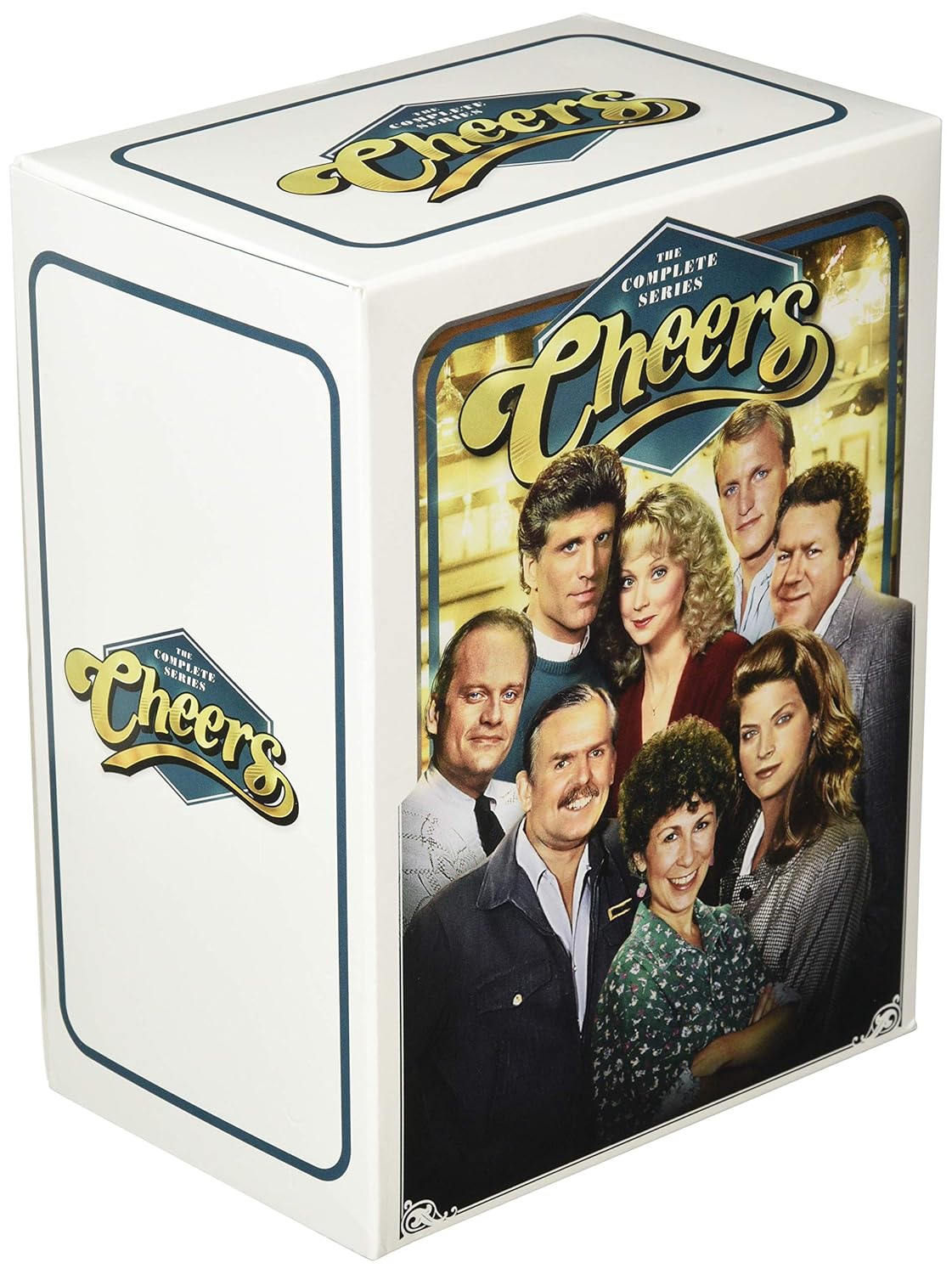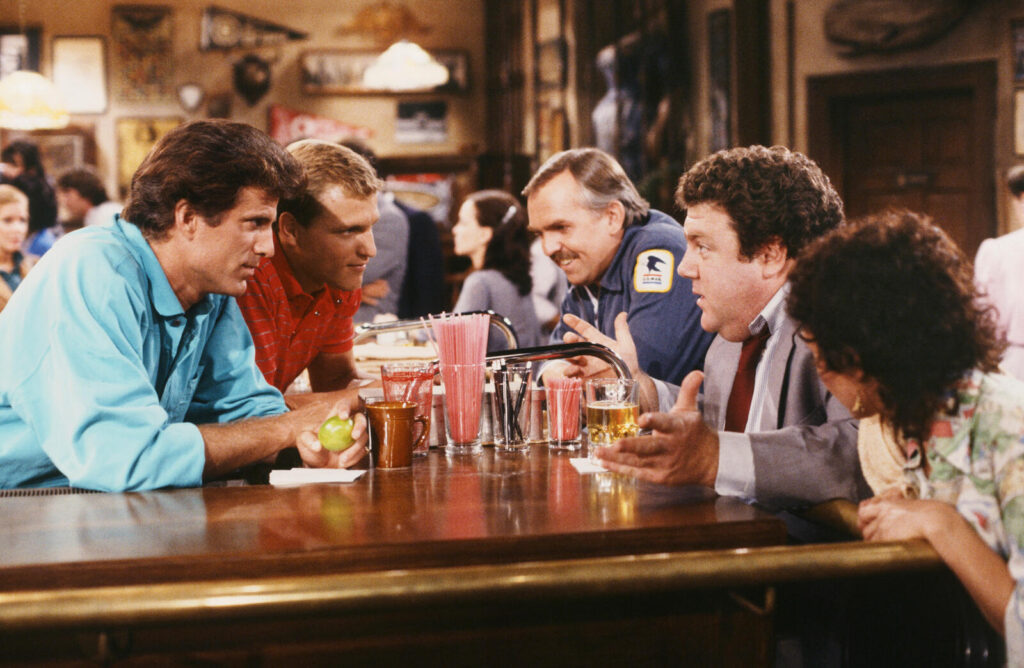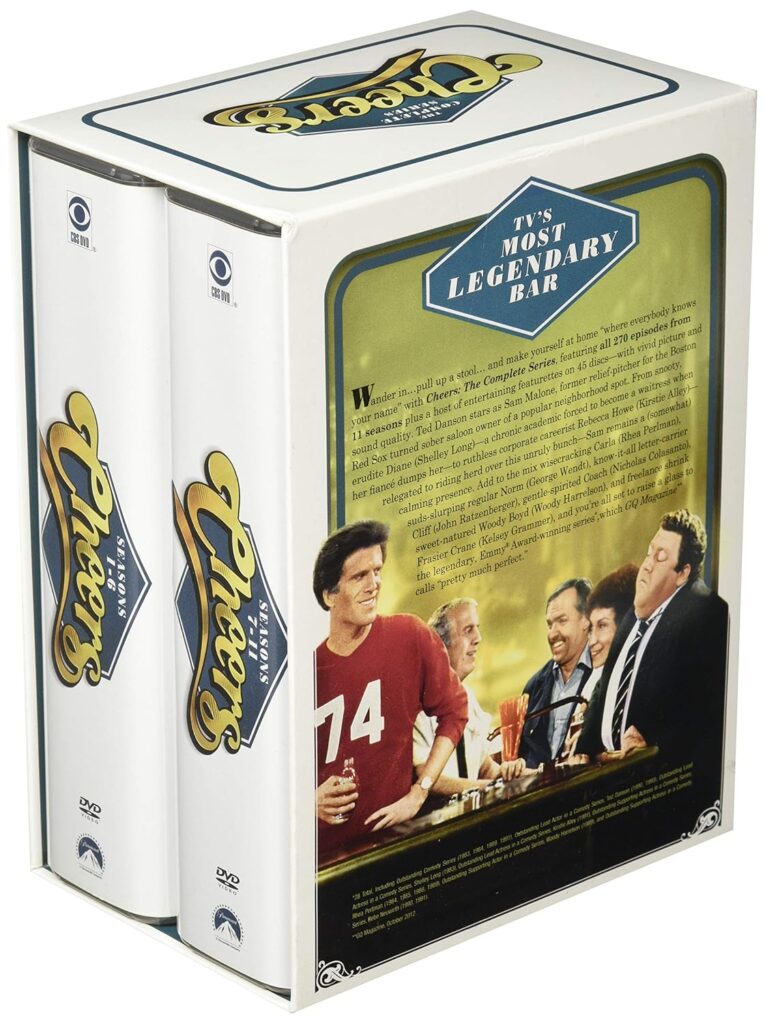
Few television shows achieve the enduring legacy and beloved status of Cheers. Spanning 11 seasons and 275 episodes, Cheers (1982–1993) is a landmark in American television, remembered for its witty dialogue, lovable characters, and warm, inviting setting. The series, created by Glen and Les Charles alongside James Burrows, centered on the regulars of a Boston bar and its staff, exploring themes of friendship, love, and human folly with humor and heart. This essay delves into the series’ development, its characters, cultural impact, and legacy as one of the most influential sitcoms of all time.
Origins and Development
The concept for Cheers arose in the early 1980s when NBC, struggling in ratings, sought fresh ideas to revitalize its programming. Glen and Les Charles, along with James Burrows, envisioned a show set in a single location—a bar—where a diverse cast of characters could naturally interact. Drawing inspiration from earlier sitcoms like The Mary Tyler Moore Show and Taxi, they sought to blend sharp humor with genuine emotion.
From its debut in September 1982, Cheers faced stiff competition and low ratings, initially placing last among network shows during its first season. However, critical acclaim and a strong ensemble cast kept it alive. NBC’s commitment to quality programming allowed Cheers to grow an audience, particularly after it began airing reruns in more favorable time slots. By its third season, the show became a ratings powerhouse and a cultural phenomenon.
Setting the Scene: A Bar Where Everybody Knows Your Name
The series’ tagline, “Where Everybody Knows Your Name,” encapsulates its central appeal. Set in the cozy basement of a Boston bar, Cheers created a sense of community that resonated with viewers. The eponymous bar, a microcosm of society, became a haven where patrons could escape the challenges of their lives.
The Cheers set was meticulously designed, with its warm wood tones, stained-glass accents, and ever-present bar stools. It was not just a backdrop but a character in its own right, grounding the series in an atmosphere of familiarity. The setting’s simplicity allowed the writing and performances to shine, keeping the focus on relationships rather than elaborate plots.
The Characters: A Cast for the Ages
Cheers is renowned for its richly developed characters, each of whom brought distinct personalities, quirks, and dynamics to the show. At the heart of the series was Sam Malone (Ted Danson), a former Red Sox pitcher turned bar owner and recovering alcoholic. Sam’s charm and flirtatiousness made him a central figure, but his vulnerabilities and growth over the series lent depth to the character.
Opposite Sam was Diane Chambers (Shelley Long), an intellectual waitress with aspirations of literary greatness. The will-they-won’t-they tension between Sam and Diane defined the early seasons, with their contrasting personalities leading to both hilarious clashes and heartfelt moments. Shelley Long’s departure in 1987 marked a significant transition for the show, yet its quality remained intact.
.

.
Other key characters included:
- Coach (Nicholas Colasanto): Sam’s endearingly absent-minded mentor in the first three seasons, whose death in real life was poignantly addressed in the series.
- Norm Peterson (George Wendt): The bar’s most loyal regular, Norm’s one-liners about his personal life and love of beer became iconic.
- Cliff Clavin (John Ratzenberger): A know-it-all mailman whose trivial facts and social awkwardness provided endless comedic material.
- Carla Tortelli (Rhea Perlman): The wisecracking, sharp-tongued waitress whose personal chaos and sharp wit added spice to the bar’s dynamic.
- Rebecca Howe (Kirstie Alley): Introduced as the bar manager in Season 6, Rebecca brought a new flavor of humor and vulnerability to the ensemble.
- Frasier Crane (Kelsey Grammer): A psychiatrist with a penchant for pretension, Frasier’s character grew so popular that he became the focus of the successful spin-off Frasier.
This ensemble’s chemistry was unmatched. The actors embodied their characters so fully that viewers felt as though they were patrons at the bar, eavesdropping on friends.
Themes and Humor
The humor in Cheers was multilayered, ranging from clever wordplay to physical comedy, all balanced with moments of sincerity. Much of its charm stemmed from its ability to tackle serious topics—addiction, loneliness, heartbreak—while maintaining a lighthearted tone.
The recurring theme of “family by choice” resonated deeply. The bar was a surrogate family for its characters, each of whom brought personal struggles and insecurities. Whether it was Norm escaping his marital woes, Diane seeking validation, or Rebecca chasing unrequited dreams, Cheers highlighted the flaws and humanity of its characters.
The romantic tension between Sam and Diane was particularly significant. Their relationship, marked by witty banter and genuine affection, was a masterclass in sitcom storytelling. Even after Diane’s departure, the show retained its romantic underpinnings, particularly through Rebecca’s unrequited love for corporate success and occasional romantic entanglements with Sam.
Impact and Reception
By the time Cheers concluded in 1993, it had cemented its place in television history. The series won 28 Primetime Emmy Awards, including Outstanding Comedy Series four times. Ted Danson and Rhea Perlman each won multiple acting awards, while the writers were lauded for their exceptional work.
The final episode, “One for the Road,” aired on May 20, 1993, and drew over 93 million viewers, making it one of the most-watched finales in television history. It was a bittersweet goodbye to a beloved show, and its emotional resonance underscored the depth of connection fans felt with its characters.

Legacy
The legacy of Cheers extends far beyond its original run. The series has been widely syndicated, ensuring that new generations continue to discover its charm. Its influence on modern sitcoms is undeniable, inspiring shows like Friends, How I Met Your Mother, and The Office, all of which borrow elements from Cheers’ ensemble approach and character-driven humor.
The spin-off Frasier further solidified the Cheers universe’s impact, becoming one of the most successful spin-offs in TV history. Kelsey Grammer’s portrayal of Frasier Crane was so beloved that it outlasted the original show, running for 11 seasons itself and recently inspiring a reboot.
A Timeless Invitation
At its heart, Cheers remains a story about human connection. Its tagline promises a place “where everybody knows your name,” and for millions of viewers, the show delivered exactly that. Whether through its humor, warmth, or relatable characters, Cheers offered comfort and escape, creating a sense of belonging that few shows have replicated.
In today’s fragmented media landscape, where binge-watching and streaming dominate, Cheers endures as a reminder of a time when television could be both a nightly ritual and a communal experience. Its humor remains sharp, its characters timeless, and its themes universal, ensuring its place as one of the greatest television series of all time.
Check out Cheers: The Complete Series on Amazon by clicking here.
.

Pingback: Frasier: The Complete Series Box Set - Fatty Daddy Review